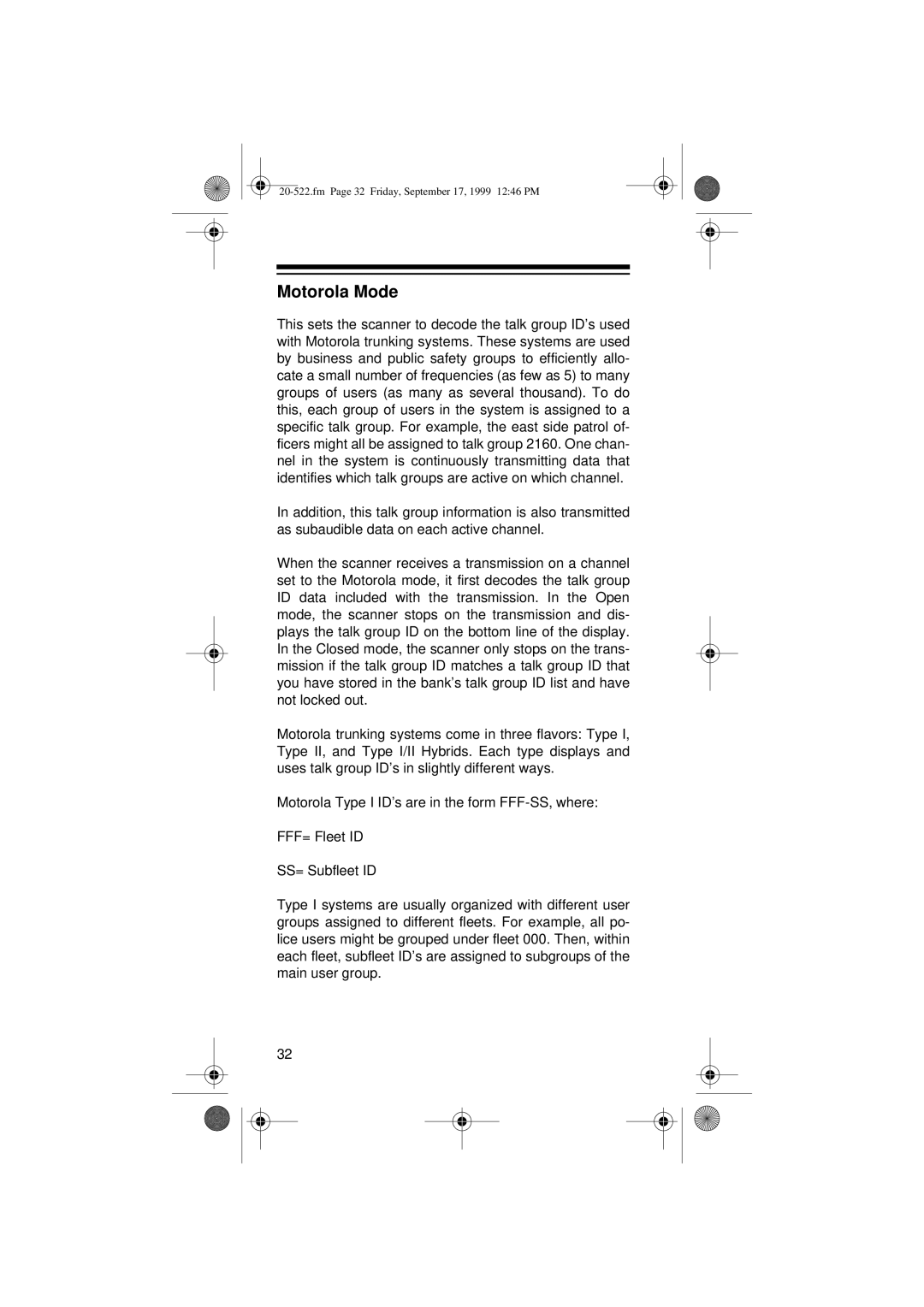
Motorola Mode
This sets the scanner to decode the talk group ID’s used with Motorola trunking systems. These systems are used by business and public safety groups to efficiently allo- cate a small number of frequencies (as few as 5) to many groups of users (as many as several thousand). To do this, each group of users in the system is assigned to a specific talk group. For example, the east side patrol of- ficers might all be assigned to talk group 2160. One chan- nel in the system is continuously transmitting data that identifies which talk groups are active on which channel.
In addition, this talk group information is also transmitted as subaudible data on each active channel.
When the scanner receives a transmission on a channel set to the Motorola mode, it first decodes the talk group ID data included with the transmission. In the Open mode, the scanner stops on the transmission and dis- plays the talk group ID on the bottom line of the display. In the Closed mode, the scanner only stops on the trans- mission if the talk group ID matches a talk group ID that you have stored in the bank’s talk group ID list and have not locked out.
Motorola trunking systems come in three flavors: Type I, Type II, and Type I/II Hybrids. Each type displays and uses talk group ID’s in slightly different ways.
Motorola Type I ID’s are in the form
FFF= Fleet ID
SS= Subfleet ID
Type I systems are usually organized with different user groups assigned to different fleets. For example, all po- lice users might be grouped under fleet 000. Then, within each fleet, subfleet ID’s are assigned to subgroups of the main user group.
32
